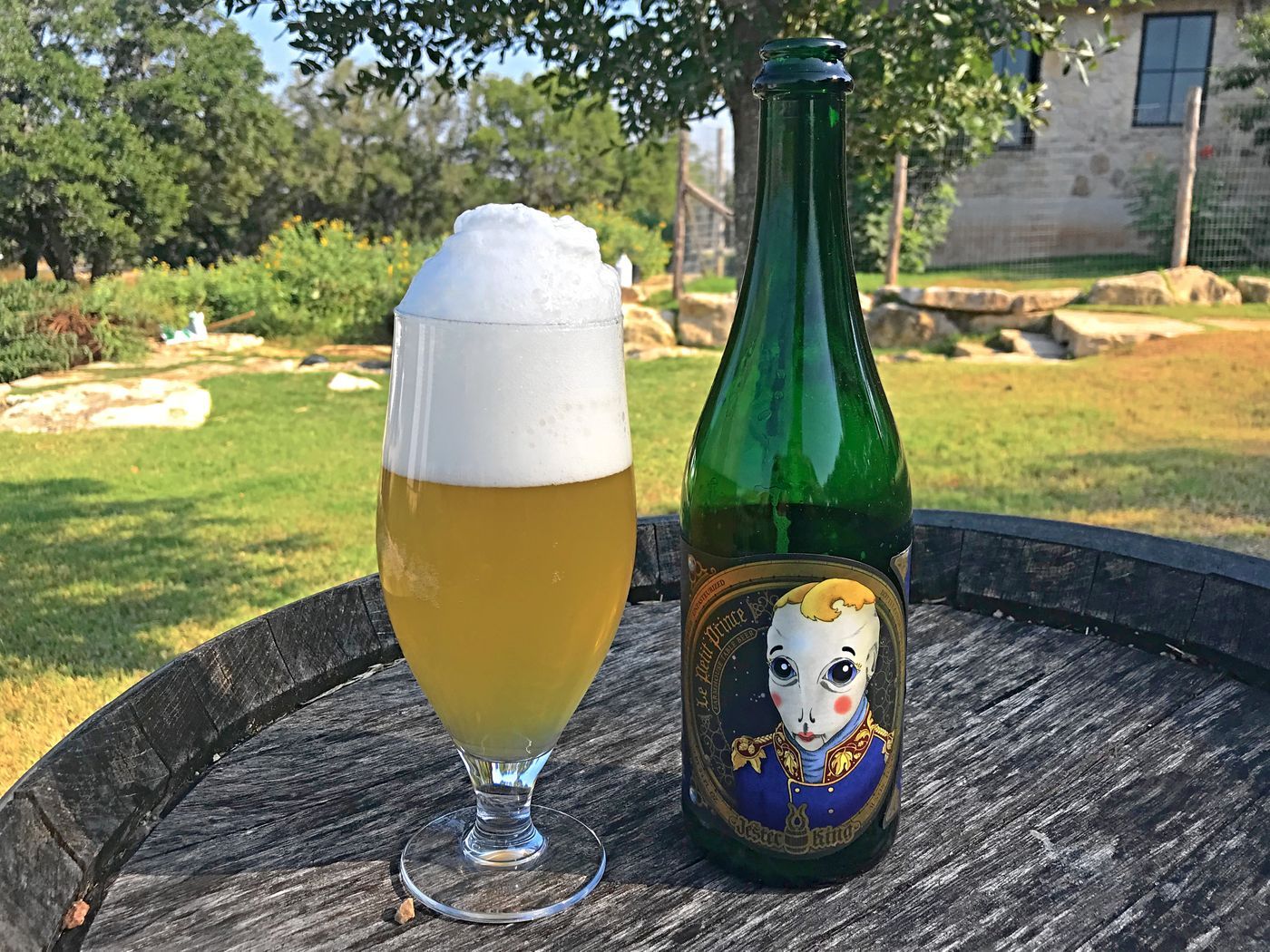In honor of last week’s release of Le Petit Prince, we’d like to share with you the recipe to make your own at home. Recipe is follows:

Le Petit Prince Homebrew Recipe
Batch size: 5 Gallons
O.G. 1.023
F.G. 1.000
Target ABV: 2.9 %
I.B.U. 27
Mash Temp: 149F
Efficiency: 75%
MALT
Blacklands Pale Moon - 3.5 lbs - 78%
Weyermann Wheat Malt - 1 lbs - 22%
HOPS
East Kent Goldings - 0.7 oz - 60 min - 5% AA
Fuggles - 0.5 oz - 10 min - 4.5% AA
Fuggles - 1 oz - Flameout/Whirlpool - 4.5% AA
Saaz - 4 oz - Dry Hop - 3.5% AA
And lastly, a note on yeast, fermentation, and bottle conditioning from Jester King Senior Brewer Sean Spiller:
At Jester King, we ferment all of our beers (other than our Spontaneous program) with a mixed culture of wild yeast and bacteria, most of which has been captured from the land around the brewery. All of our beer is then refermented in the bottle to produce carbonation. This means that there is living yeast in the bottom of each and every one of our bottles.
If you are trying to produce a beer at home that tastes like a Jester King beer, culturing this yeast from the bottle is the way to go. Not every beer will have viable yeast to build from, though. A beer that has been aged in oak for over a year, refermented with fruit, then refermented in the bottle, will not have the freshest yeast. I recommend culturing from a bottle of Le Petit Prince or other similar low ABV offerings. Another way to get the Jester King house culture into your homebrew would be to primary ferment with a suitable yeast (Wyeast 3711 French Saison or White Labs 565 Belgian Saison work great) and then add the bottle dregs post fermentation. This type of mixed culture fermentation will take much longer for the desired flavor and aroma profile to become present. A Jester King beer will primary ferment for anywhere between 6-10 weeks, generally. Our mixed culture will take most beers all the way to a specific gravity of 1.000, which is what we call “bone dry.” I would not recommend packaging your beer until the gravity has reached a similarly low specific gravity.
At packaging, we add enough dextrose to reach an average CO2 level of 3 volumes. If the beer has sat for a while, we'll add a touch more of the mixed culture to ensure proper refermentation. We allow a bare minimum of 3 weeks for after packaging for our beers to condition and carbonate. The mixed culture will kick up some pretty crazy flavors and aromas in the first week or two, all of which will be absorbed or dissipate with time in the bottle. The most important thing to remember when making this type of beer is patience. To quote the famous barrel head hanging in the cellar of Brasserie Cantillon, “Le temps ne respecte pas ce qui se fait sans Lui,” or “Time does not respect what is done without him.”
Cheers!
